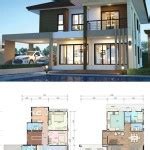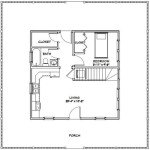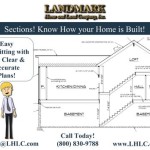Coastal house plans encompass architectural blueprints specifically tailored for residences situated in coastal areas. These plans take into consideration the unique environmental challenges and opportunities presented by coastal living, such as exposure to strong winds, salt spray, and potential flooding.
In designing coastal houses, architects incorporate features that enhance durability, resilience, and comfort. For instance, elevated foundations protect the structure from storm surges and flooding, while hurricane-rated windows and doors provide protection against high winds.
With their careful attention to coastal conditions, coastal house plans enable homeowners to enjoy the advantages of living by the sea while safeguarding their property from the elements. In the following sections, we will delve deeper into the key considerations and design strategies employed in coastal house planning.
Coastal house plans prioritize key considerations for homes in coastal environments:
- Elevated foundations
- Hurricane-rated windows/doors
- Durable exterior materials
- Flood-resistant designs
- Energy efficiency
- Stormwater management
- Coastal views
- Indoor-outdoor flow
These elements ensure resilience, comfort, and enjoyment in coastal living.
## Elevated foundations
Elevated foundations are a critical component of coastal house plans, providing numerous benefits for homes in coastal environments. By raising the structure above ground level, elevated foundations serve several key purposes:
- Protection from flooding: In the event of flooding, elevated foundations keep the living space above water, preventing damage to the structure and its contents. This is particularly important in areas prone to storm surges and coastal flooding.
- Reduced moisture damage: Elevating the house reduces its exposure to moisture from the ground, which can cause rot and other structural issues. This is especially important in coastal areas with high humidity and frequent rainfall.
- Improved ventilation: Elevated foundations allow for better air circulation beneath the house, which helps to prevent moisture buildup and promotes the longevity of the structure.
- Enhanced views: In many coastal areas, elevated foundations offer panoramic views of the surrounding landscape, including the ocean, beach, or other scenic vistas.
The height of the elevated foundation will vary depending on local building codes, flood risk, and the desired level of protection. In some cases, houses may be elevated on pilings or stilts to achieve the necessary height.
Hurricane-rated windows/doors
Hurricane-rated windows and doors are an essential element of coastal house plans, providing critical protection against the impact of hurricanes and other severe storms. These windows and doors are designed to withstand high winds, wind-borne debris, and water intrusion, ensuring the safety and integrity of the home.
Hurricane-rated windows and doors are constructed using impact-resistant materials, such as laminated glass or polycarbonate, which are designed to resist breakage and penetration. The frames of these windows and doors are also reinforced to provide additional strength and durability. In addition, hurricane-rated windows and doors are typically equipped with multiple locking mechanisms to ensure a tight seal and prevent wind and water from entering the home.
The impact resistance of hurricane-rated windows and doors is measured using the ASTM E1996 standard. This standard evaluates the ability of windows and doors to withstand the impact of a 9-pound (4.1 kg) 2×4 wood stud traveling at 34 miles per hour (55 kilometers per hour). Windows and doors that pass this test are classified as impact-resistant and are suitable for use in coastal areas.
In addition to their protective benefits, hurricane-rated windows and doors can also contribute to the energy efficiency of the home. By reducing air infiltration, these windows and doors can help to maintain a more consistent indoor temperature, reducing the demand on heating and cooling systems. Hurricane-rated windows and doors can also help to reduce noise pollution from outside, creating a more peaceful and comfortable living environment.
Durable exterior materials
Coastal house plans prioritize the use of durable exterior materials to withstand the harsh conditions often associated with coastal environments. These materials are carefully selected to resist moisture, salt spray, UV radiation, and other elements that can damage or deteriorate building materials over time.
- Fiber cement siding: Fiber cement siding is a popular choice for coastal homes due to its durability and resistance to moisture, rot, and insects. It is made from a mixture of cement, sand, and cellulose fibers, and is available in a variety of textures and colors to complement any architectural style.
- Vinyl siding: Vinyl siding is another low-maintenance option for coastal homes. It is made from durable PVC plastic that is resistant to moisture, fading, and impact. Vinyl siding is also available in a wide range of colors and styles, and can be installed quickly and easily.
- Stucco: Stucco is a traditional exterior finish that is often used on coastal homes. It is made from a mixture of cement, sand, and lime, and is applied in multiple layers to create a durable and weather-resistant finish. Stucco can be textured or smooth, and can be painted in any color.
- Metal roofing: Metal roofing is a popular choice for coastal homes due to its durability and resistance to high winds and corrosion. Metal roofing is available in a variety of materials, including aluminum, steel, and copper, and can be installed in a variety of styles.
In addition to these materials, coastal house plans may also incorporate other durable elements, such as composite decking, PVC trim, and stainless steel hardware. By using durable exterior materials, coastal homes can withstand the harsh conditions of the coast and maintain their beauty and integrity for years to come.
Flood-resistant designs
Flood-resistant designs are an essential aspect of coastal house plans, as they help to protect the home from damage caused by flooding. These designs incorporate a variety of strategies to minimize the risk of flooding and mitigate its potential impact on the structure.
- Elevated foundations: As mentioned previously, elevated foundations can significantly reduce the risk of flooding by raising the living space above the ground level. This helps to keep the home dry and protected from floodwaters.
- Flood vents: Flood vents are openings in the foundation of the home that allow floodwaters to enter and exit the structure. This helps to equalize the water pressure inside and outside the home, preventing the walls from collapsing.
- Watertight doors and windows: Watertight doors and windows are designed to prevent floodwaters from entering the home through openings. These doors and windows are typically made from durable materials, such as aluminum or fiberglass, and are equipped with gaskets or seals to keep water out.
- Wet floodproofing: Wet floodproofing involves making the lower level of the home resistant to flooding. This can be achieved by using waterproof materials, such as concrete or tile, and installing flood-resistant appliances and fixtures.
By incorporating these flood-resistant designs into coastal house plans, homeowners can significantly reduce the risk of flooding and protect their homes from damage. It is important to note that flood-resistant designs should be tailored to the specific flood risk of the area where the home is located.
Energy efficiency
Energy efficiency is a key consideration in coastal house plans, as it helps to reduce energy consumption and lower utility bills. Coastal homes are particularly susceptible to energy loss due to their exposure to wind and moisture. However, there are a number of energy-efficient design strategies that can be employed to minimize energy loss and create a more comfortable and sustainable living environment.
One important aspect of energy efficiency in coastal house plans is the use of proper insulation. Insulation helps to trap heat in the winter and keep the home cool in the summer, reducing the demand on heating and cooling systems. Coastal homes should be insulated in the walls, ceilings, and floors to maximize energy efficiency. In addition, energy-efficient windows and doors can help to reduce air infiltration and heat loss.
Another important aspect of energy efficiency in coastal house plans is the use of passive solar design. Passive solar design involves orienting the home to take advantage of the sun’s natural heat. In the winter, the home should be oriented to face south to maximize solar gain. In the summer, the home should be oriented to minimize solar gain and maximize cross-ventilation.
Finally, coastal house plans should incorporate energy-efficient appliances and fixtures. Energy-efficient appliances, such as refrigerators, dishwashers, and washing machines, use less energy to operate. Energy-efficient lighting fixtures, such as LED and CFL bulbs, also use less energy and last longer than traditional incandescent bulbs.
By incorporating these energy-efficient design strategies into coastal house plans, homeowners can significantly reduce their energy consumption and create a more comfortable and sustainable living environment.
Stormwater management
Stormwater management is an important consideration in coastal house plans, as it helps to control the flow of stormwater runoff from the property. Proper stormwater management can help to prevent flooding, erosion, and other damage to the home and surrounding landscape.
- Grading and drainage: The grading of the property and the installation of proper drainage systems are essential for effective stormwater management. The property should be graded to direct stormwater runoff away from the home and towards designated drainage areas. Drainage systems, such as gutters, downspouts, and French drains, can help to collect and convey stormwater runoff to these areas.
- Rain gardens and bioswales: Rain gardens and bioswales are planted depressions that collect and filter stormwater runoff. These features can help to reduce the amount of runoff that enters local waterways and improve water quality. Rain gardens are typically planted with native plants that are tolerant of wet conditions, while bioswales are typically planted with grasses and other vegetation that can help to slow down and filter stormwater runoff.
- Permeable pavement: Permeable pavement is a type of pavement that allows stormwater to infiltrate the ground instead of running off into local waterways. Permeable pavement can be used for driveways, patios, and other areas where stormwater runoff is a concern. By allowing stormwater to infiltrate the ground, permeable pavement can help to reduce flooding and erosion, and recharge groundwater supplies.
- Green roofs: Green roofs are roofs that are partially or completely covered with vegetation. Green roofs can help to reduce stormwater runoff by absorbing rainwater and releasing it slowly over time. Green roofs can also help to insulate the home, reduce noise pollution, and improve air quality.
By incorporating these stormwater management strategies into coastal house plans, homeowners can help to protect their homes and the surrounding environment from the damaging effects of stormwater runoff.
Coastal views
Coastal views are a highly sought-after feature in coastal house plans. Homeowners are drawn to the beauty and tranquility of the ocean, and the opportunity to enjoy stunning views from their own homes. Coastal house plans can incorporate a variety of design strategies to maximize coastal views and create a strong connection between the home and its surroundings.
- Large windows and doors: Large windows and doors are a great way to frame coastal views and bring the outside in. Floor-to-ceiling windows or sliding glass doors can provide panoramic views of the ocean, while smaller windows can be strategically placed to capture specific vistas. It is important to consider the orientation of the home and the placement of windows to ensure that the best views are captured.
- Elevated decks and balconies: Elevated decks and balconies offer a unique perspective on the coastal landscape. They allow homeowners to enjoy views of the ocean, beach, or other surroundings from a higher vantage point. Decks and balconies can be designed with built-in seating or dining areas, creating outdoor living spaces that take full advantage of the coastal views.
- Rooftop terraces: Rooftop terraces are another great way to enjoy coastal views. They offer a private and elevated space to relax and entertain while taking in the surrounding. Rooftop terraces can be equipped with amenities such as outdoor kitchens, fire pits, and seating areas to create a luxurious and comfortable outdoor living space.
- Courtyards: Courtyards are a great way to create a private outdoor space that is protected from the wind and sun. Courtyards can be designed with landscaping, water features, and seating areas to create a tranquil oasis where homeowners can relax and enjoy the coastal views.
By incorporating these design strategies into coastal house plans, homeowners can maximize coastal views and create a strong connection between their homes and the surrounding environment.
Indoor-outdoor flow
Indoor-outdoor flow is an important consideration in coastal house plans, as it allows homeowners to seamlessly connect their indoor and outdoor living spaces. This creates a more open and inviting living environment, and allows homeowners to take full advantage of the coastal climate and surroundings.
- Large windows and doors: Large windows and doors are a great way to create a strong connection between the indoor and outdoor spaces. Floor-to-ceiling windows or sliding glass doors can open up the home to the outdoors, blurring the line between inside and out. This allows homeowners to enjoy the coastal views and natural light from the comfort of their indoor living spaces.
- Patios and decks: Patios and decks are a great way to extend the living space outdoors. These outdoor areas can be used for dining, entertaining, or simply relaxing and enjoying the coastal views. Patios and decks can be designed with built-in seating, fire pits, or outdoor kitchens to create a comfortable and inviting outdoor living space.
- Screened porches and sunrooms: Screened porches and sunrooms are a great way to enjoy the outdoors without being exposed to the elements. These enclosed spaces can be used for dining, reading, or simply relaxing while enjoying the coastal views. Screened porches and sunrooms can be designed with comfortable seating, ceiling fans, and other amenities to create a relaxing and enjoyable outdoor living space.
- Courtyards: Courtyards are a great way to create a private outdoor space that is protected from the wind and sun. Courtyards can be designed with landscaping, water features, and seating areas to create a tranquil oasis where homeowners can relax and enjoy the outdoors.
By incorporating these design strategies into coastal house plans, homeowners can create a seamless indoor-outdoor flow that allows them to take full advantage of the coastal climate and surroundings.










Related Posts








